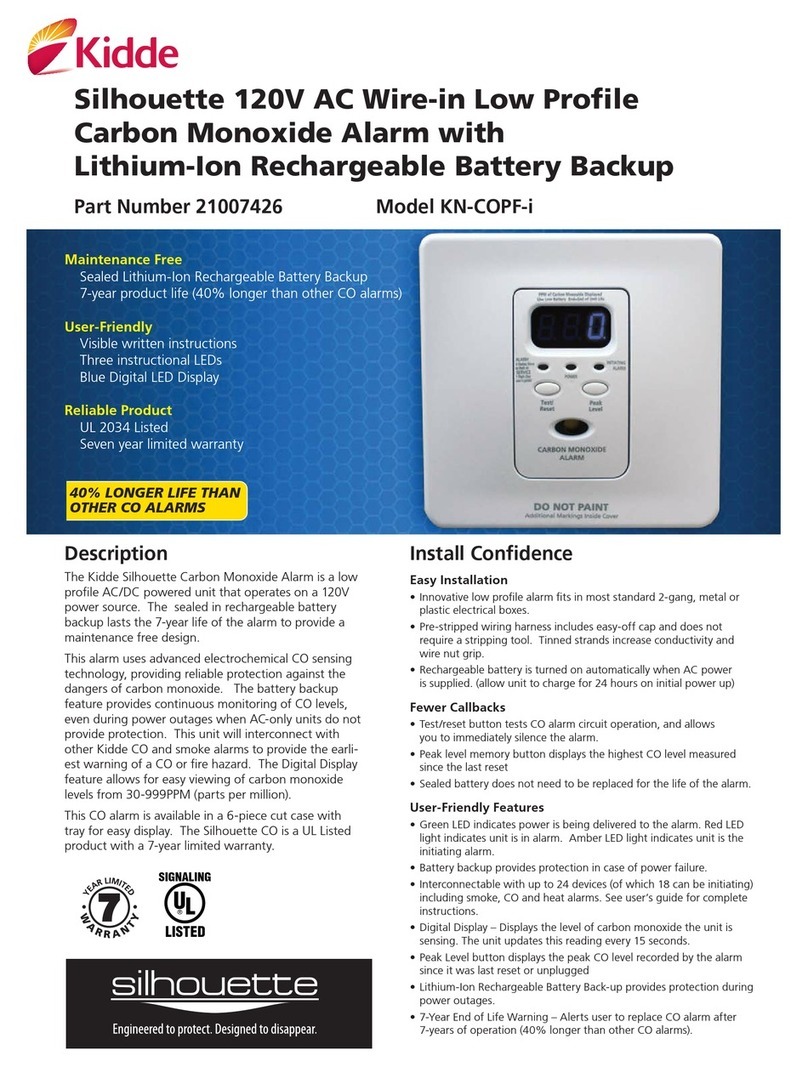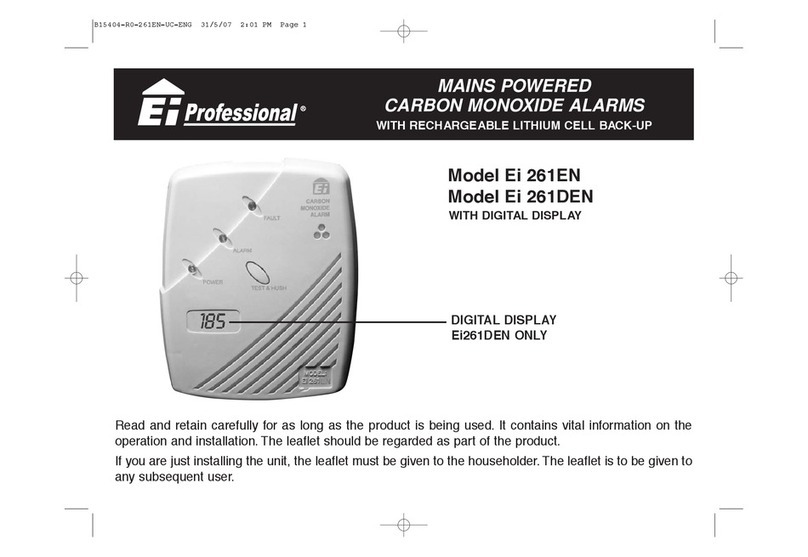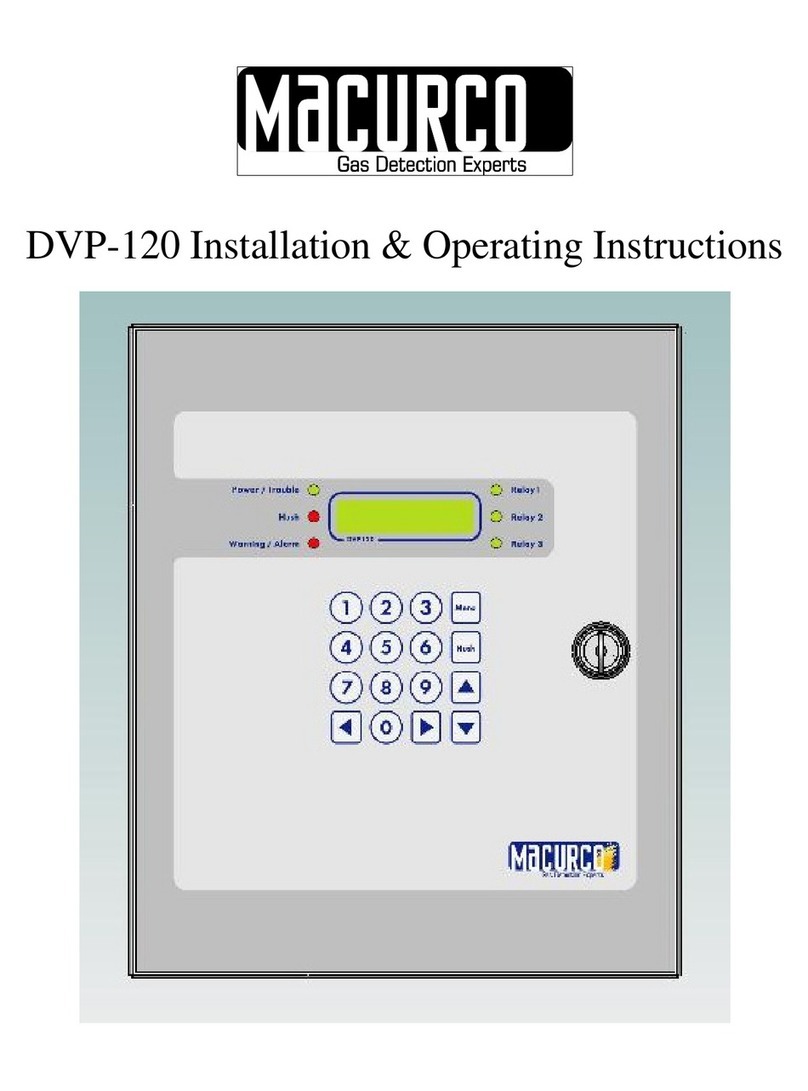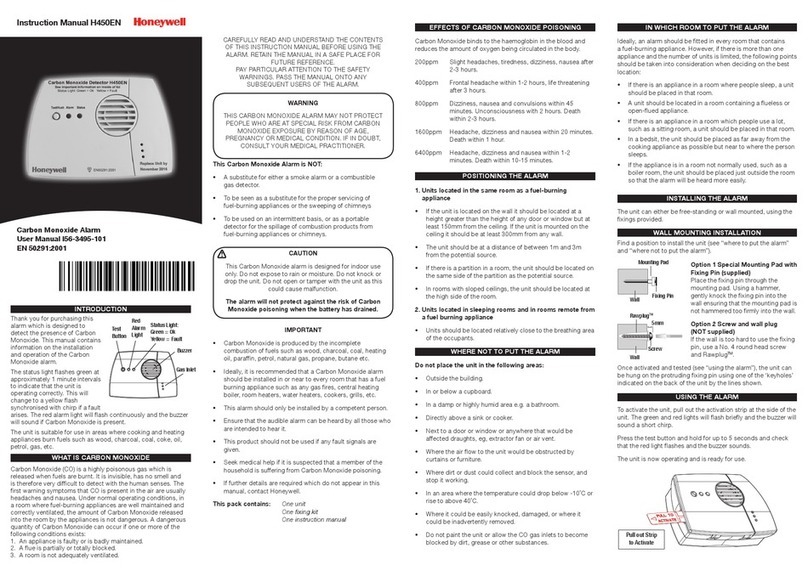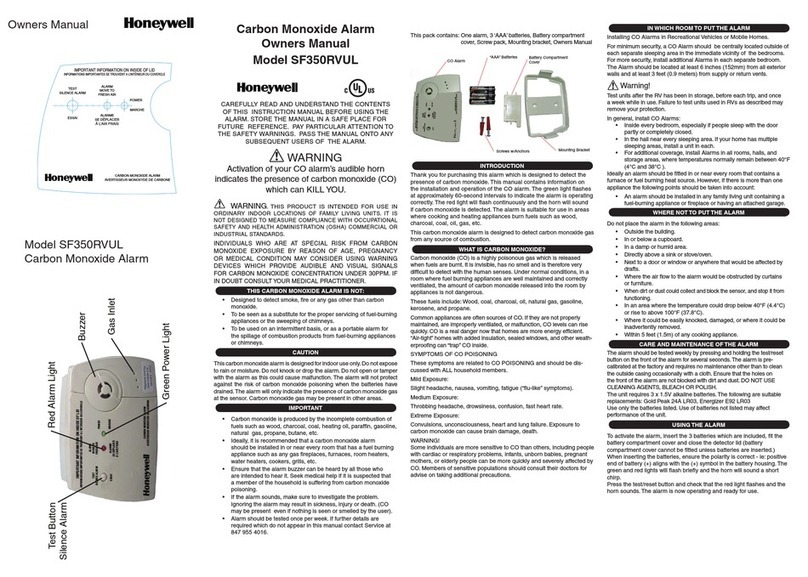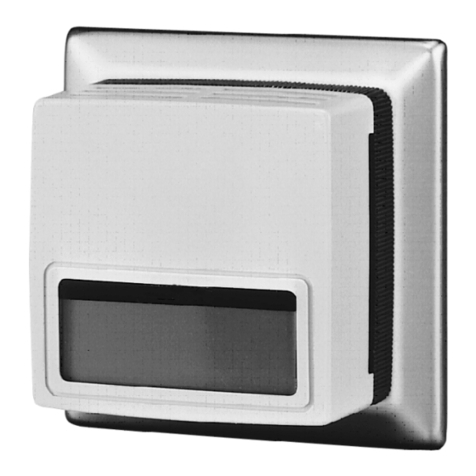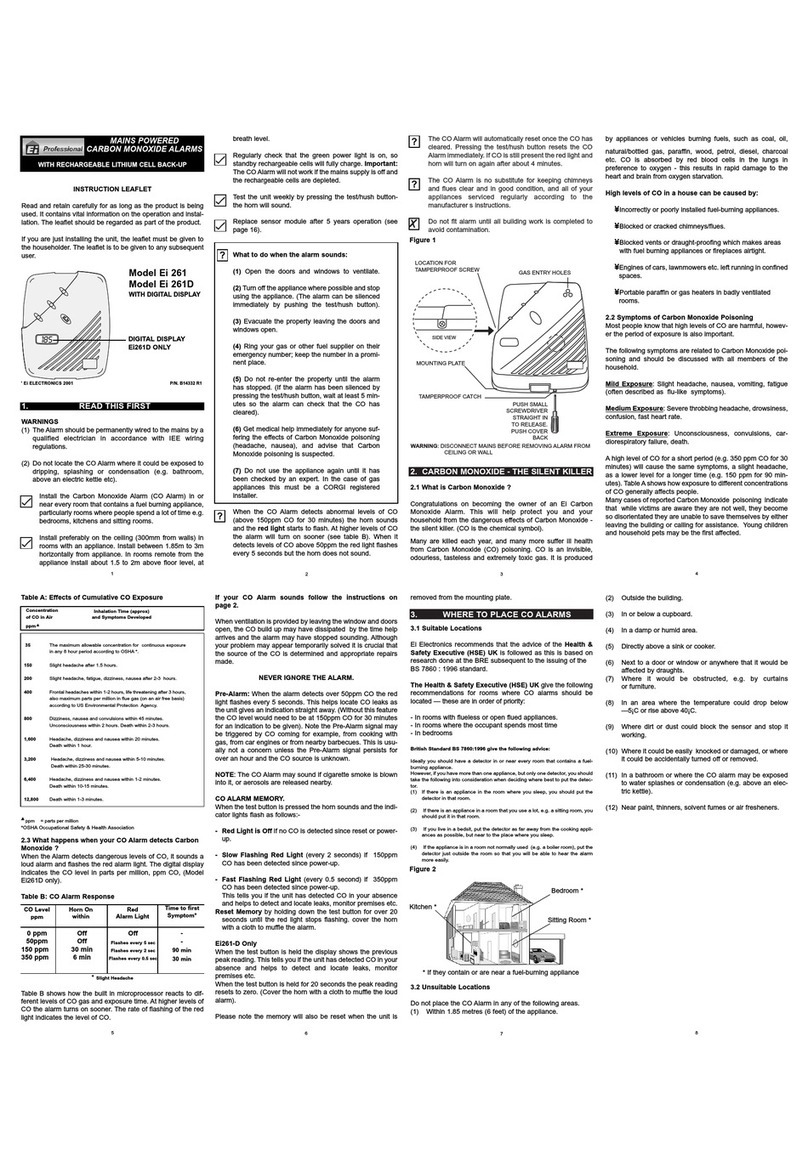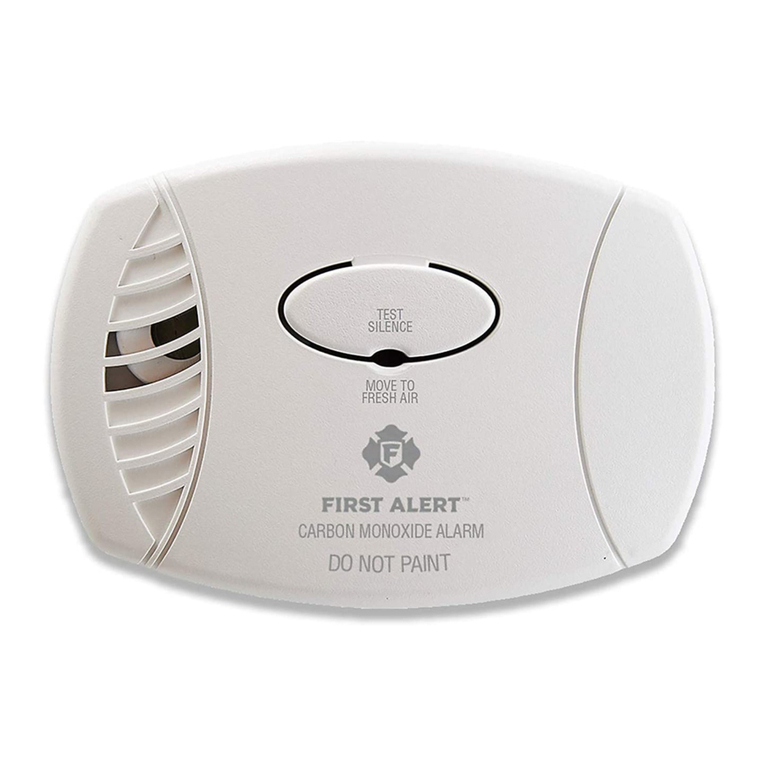primatech SECOR d User manual

METHANE GAS AND CARBON
MONOXIDE DETECTOR
USER’S MANUAL
Methane Gas (CH4) and
Carbon monoxide (CO)
Dual Detector


by
WARNING! Please read the manual carefully
before installation of the detector.Failure to
follow instructions will lead to loss of warranty.
Dual Detector for Methane (CH )
4
and Carbon Monoxide (CO)

TABLE OF CONTENTS
TECHNICAL SPECIFICATIONS............................................2
WHAT YOUR METHANE GAS AND CO DETECTOR CAN
AND CANNOT DO..............................................................3
WHERE TO INSTALL YOUR METHANE GAS AND CO
DETECTOR..........................................................................5
WHERE NOT TO INSTALL YOUR METHANE GAS AND CO
DETECTOR..........................................................................6
CONNECTION METHODS.................................................9
OPERATION......................................................................12
TESTING THE DETECTOR................................................13
MAINTENANCE................................................................13
DETECTOR LIFETIME.......................................................15

TECHNICAL SPECIFICATIONS:
Sensor: Semiconductor SnO2
Power supply: 230 V AC (-15% +10%) 50/60 Hz
Detected gas: methane and carbon monoxide
Methane Gas sensitivity: 3% - 20% LEL
Alarm before 3 min: 300 ppm Carbon monoxide
concentration
Initial delay time: 2 min 30 sec
Indicators:
Green LED: Power supply
Red LED: Carbon Monoxide Visual alarm
Red LED: continuous – Methane gas visual alarm
flashing – normal operation
BUZZER: acoustic alarm – min. 85 dB at 1 m
Sensor lifetime: 5 years
Contact ratings:
8(2) A @ 250 V AC SPDT
3A @ 250 V AC SPST (optional)
Operating temperature: -10° C ÷ +40° C
Storage temperature: -20° C ÷ +50° C
Humidity limits (non-condensing): 20% - 90% RH
Protection Grade: IP 42
Case:
Material: ABS V0
Color: white
Size: 115 x 75 x 43 mm (W x H x D)
Weight: 300 g
2

WARNING! The installation of the detector in an area
where it is not recommended for it to be installed can
affect sensor operation.
WARNING! Do not tamper with the detector, since
this may stop the detector working or cause an
electric shock hazard.
WHAT YOUR METHANE GAS AND CO
DETECTOR CAN AND CANNOT DO
This unit is designed to sense unacceptable levels of gas
from malfunctioning furnaces, appliances or other
sources. This unit will provide early warning of the
presence of gas, usually before a healthy adult would
experience symptoms.
It will provide warning of a gas condition when a
concentration between 3% and 20% LEL for methane is
detected, before the gas concentration reaches a
dangerous level for triggering an explosion.
In the case of an apartment with several rooms with open
doors on the same floor or different floors, the gas
concentration will be higher in the room where the leak
occurs and will decrease in the other rooms further away
from the origin of the leak. The detector cannot detect a
gas leak which has been produced on another level of the
building. The gas detector will indicate the presence of gas
only in the proximity of the sensor, but the gas can be
located in other areas too. The detectors have limitations.
Like any other electronic device, gas detectors are not
foolproof. 3

You must test your gas detector monthly.
If your Gas Detector fails to test properly, or if its self-
diagnostic test reveals a malfunction, have the unit
replaced immediately. It's important to safeguard your life
from carbon monoxide(CO) gas because it is impossible to
see, taste, or smell the toxic fumes of CO. CO accidentally
kills people each year.
Most confuse the symptoms of CO exposure with the flu
or food poisoning as the symptoms are similar. Exposure
to CO can impede coordination, worsen cardiovascular
conditions, and produce fatigue, headache, weakness,
confusion, disorientation, nausea, and dizziness. High
levels of CO exposure can result in death. Homeowners
should be aware of the risks of CO exposure.
CO is produced as a result of incomplete burning of
carbon-containing fuels including coal, wood,charcoal,
natural gas, propane, and fuel oil. CO can be emitted by
combustion sources such as unvented kerosene and gas
space heaters, leaking chimneys and furnaces, back-
drafting from furnaces, gas water heaters, wood stoves,
and fireplaces, gas stoves, generators and other gasoline
powered equipment, automobile exhaust from attached
garages, and tobacco smoke.
4

WHERE TO INSTALL YOUR METHANE GAS AND CO
DETECTOR
The gas detector should be installed in the room where
a gas leak is most likely to occur. This may be the kitchen
because of the presence of a gas cooker and other gas
appliances.
The gas , lighter than air, tends to rise and fill all the
volume above the level of the leak. Also several factors
may modify this behavior, such as heat sources and
ventilation. In general the concentration above the level
of a leak will be equal to or greater than the
concentration below.
It should be possible to view all the light indicators and
hear the alarm,in case of a leak, when you are in the
vecinity of the chosen location of the detector.
The gas detector should be installed above the level of a
possible gas leak and near the ceiling (typically 30 cm from
the ceiling), in a place where air movements are not
impeded by furniture and furnishings.
5

The detector should be at horizontal distance of between
1 m and 3 m from the potential source.
If there is a partition in a room, the detector should be
located on the same side of the partition as the potential
source.
The detector in room with sloped ceiling should be
located at the highest side of the room.
The detector located in sleeping room or in room remote
from the fuel-burning appliance should be located
relatively close to the breathing zone of the occupants.
WHERE NOT TO INSTALL YOUR METHANE
GAS AND CO DETECTOR
The detector should not be installed:
- in an enclosed space (for example in a cupboard or
behind a curtain);
- where it can be obstructed (for example by furniture);
- directly above a sink;
- next to a door or window;
- next to an extractor fan;
- next to an air vent or other similar ventilation
openings;
- in an area where the temperature may drop below -
10°C or exceed +40°C;
- where dirt and dust may block the sensor;
- in a damp or humid location;
- in the immediate vicinity of the cooking appliance.
6

The detector should not be installed above or next to gas
appliances because small gas releases may occur at start
up and they may generate unwanted alarms. It should be
noticed that installation near cookers may lead to alarms
produced by cooking vapors and not gas leaks.
It should also be noticed that contamination by grease
may impede the correct operation of the apparatus.
The detector should not be painted during the cleaning,
decorating or painting activities.
In order to avoid situations in which the safety of the
apparatus could be affected on short and long term, the
detector should not be installed in areas where emissions
of the paint solvents can appear, or near the heating
systems, stoves or fireplaces, or near the exhausted
gases.
Vapors of cleaning liquid gases, varnishes, paints, vapors
from the kitchen activities can affect the detector
operating and can cause false alarms and malfunctions of
the detector.
Avoid the expo sure of the detector in humid
environments or subjecting it to shocks
(e.g. the cleaning operations in the house).
According to the EN 50244 and EN 50292 standards,
ideally, a detector should be installed in every room
containing a fuel burning appliance. For added protection,
install additional detectors in remote rooms, in which the
occupants spend considerable time whilst
awake and from which they may not be able to hear an
7

alarm from the detector in another part of the premises,
and in every sleeping room.
WARNING! The installation of the detector in an area
where it is not recommended for it to be installed,
can affect sensor operation.
NOTE: The installation of the gas detector does not
eliminate the obligation to use all gas appliances in
safety conditions and to maintain the gas installations
in very good operating conditions and also all the
apparatus that operate based on combustible gases
must be periodically checked by authorized
personnel.
8

CONNECTION METHODS
WARNING! The apparatus should be installed only by
qualified personnel. Before any intervention, switch
off the power supply and make sure the device is not
powered.
For maximum protection, the recommendation is to
use the external signal, to control a solenoid valve, or an
air vent which in case of an alarm, will shut off the gas
supply, or will ventilate.
For electrical connection to the solenoid valve carefully
check the following instructions.
It is necessary to first remove
the cover of the detector.
Remove the screw from the
back of the case. Insert a flat
screwdriver in places specified
by arrows (see the drawing) to
be able to free the securing flaps
from inside.
Follow these steps:
-inside the detector, make a bridge between the COM
position of the three terminals connector and position R
of the two terminals connector;
-make a connection between NO position of the three
terminals connector and terminal 1 of solenoid
connector;
9

-make a connection
between 0 position of the
two terminals connector
and terminal 2 of solenoid
connector;
-make a ground connection
to terminal 3 of solenoid
connector;
-after you have ensured that
all connections are properly
made, power the detector
from the main 230 V AC.
In the situation of more than one detector, you can
make a parallel conection of the detectors to a
solenoid valve, like in the following instructions:
10

Follow these steps:
-inside the nearest detector from the valve, make a bridge
between the COM position of the three terminals
connector and position R of two terminals connector;
-make a connection between NO position of the nearest
detector from the valve to the terminal 1 of the solenoid
connector;
-make a connection between 0 position of the nearest
detector from the valve to the terminal 2 of the solenoid
connector;
-make a ground connection to terminal 3 of solenoid
connector;
-link between them all the NO positions of the detectors;
-link between them all the COM positions of the detectors;
-after you have ensured that all connections are properly
made, power the detectors from the mains 230 V AC.
WARNING! The user should take into consideration
that the gas detector does not function without a
power supply, that could be caused by a malfunction
of the power supply net, a burned fuse, a break
disjuncture, a shortcircuit or any other cause that
could cause the damage of the power supply.
NOTE! The gas installation and shutt-off valve must
comply with the national regulations in force
in the country where it is being installed.
11

OPERATION
This version of the detector is both a methane gas and
carbon monoxide detecting device for domestic
installations. To ensure the prevention of gas leakage the
detector is installed along with a solenoid valve, which has
the purpose to shut-off the gas supply in case of an alarm
or start a ventilator which will air the room.
NORMAL OPERATION
When there is no gas in the room, the Green LED is ON,
which indicates the unit is powered, the Red LEDs are OFF
and the Buzzer does not sound. The Red LED lights up
intermittently ,which indicates the checking of the sensor
state while the detector is in stand by.
ALARM CONDITION
When the methane gas or carbon monoxide level in
the room in which the detector is installed exceeds the
safety level the detector generates an acoustic signal (the
Buzzer sounds) and a visual signal
(Red LED is ON for carbon monoxide or for methane gas)
and the relay generates the output signal. The acoustic
and visual signal remain until the gas concentration
returns below safety limits.
IMPORTANT! The detector needs 2 min 30 sec of
warm-up time, at every power up, to stabilize and
start operating normally!.
12

TESTING THE DETECTOR
Simply press the Test/Reset button any time while in
normal operation. The Red LEDs should flash, the alarm
should sound and the relay switches while the solenoid
valve will cut off the gas flow. Release the button and
manually rearm the solenoid valve.
THIS IS THE ONLY WAY YOU SHOULD TEST THE
DETECTOR.
WARNING! Do not try to test the detector using a
cigarette lighter!
Do not test the detector by starting the gas appliance
without a flame!.
MAINTENANCE INSTRUCTIONS
In order to be sure that the detector is operating the
Green LED should be ON.
At least once a month it is recommended to verify that the
detector is functional by pressing the TEST/RESET button
for a few seconds.
For an efficient operation the detector should be cleaned
up every six months. Easily and carefully
vacuum the detector. Do not touch the apparatus with the
hose of the vacuum cleaner. Use the soft brush
attachment of your vacuum cleaner, and unplug the
detector from the electrical outlet before vacuuming.
Hand wash using a damp cloth or paper towel. Dry with a
soft cloth.
13

DO NOT SPRAY CLEANING AGENTS OR WAXES directly
onto the front panel. This action may damage the sensors,
cause an alarm or cause a detection malfunction.
Instruct children never to touch, unplug or otherwise
interfere with the detector.
Never use detergents or solvents to clean the detector.
Chemicals can permanently damage or temporarily
contaminate the sensors.
Avoid spraying air fresheners, hair spray, paint or other
aerosols near the detector.
DO NOT PAINT THE DETECTOR. Paint will seal the vents
and interfere with proper sensor operation.
NOTE: If you will be staining or stripping wood floors or
furniture, painting, wall-papering, or using aerosols or
adhesives for a do-it-yourself project or hobby, before you
begin: Remove the apparatus to a remote location to
prevent possible damage to or contamination of the
sensors. You may wish to unplug the gas detector and
store in a plastic bag during the project.
The following is a list of substances that at high levels can
affect the sensors and cause an alarm:
methane, ethylene, ethanol, alcohol, iso-propanol,
benzene, toluene, ethyl acetate, hydrogen, hydrogen
sulfide, sulfur dioxide also most aerosols sprays, alcohol
based products, paints, thinners, solvents, adhesives, hair
sprays, aftershaves, perfumes, auto exhaust (cold start)
and some cleaning agents.
14

DETECTOR LIFETIME
The lifetime of the detector is 5 years from the date of
installation.
Replace the detector after 5 years of operation.
15
ENVIRONMENTAL PROTECTION
Please dispose of packaging materials in appropriate
container at your local recycling center.
Waste electrical products should not be disposed of
with household waste. At the end of detector working life
please take the device to the recycling/disposal center or
inform about the regular collection actions organised by
the local authorities.


In the view of a constant development of their products,
the manufacturer reserves the right to change technical
data and features without prior notice.
For more information,
please visit us at:
M-DD-SED 0822 (EN)
Table of contents
Popular Carbon Monoxide Alarm manuals by other brands
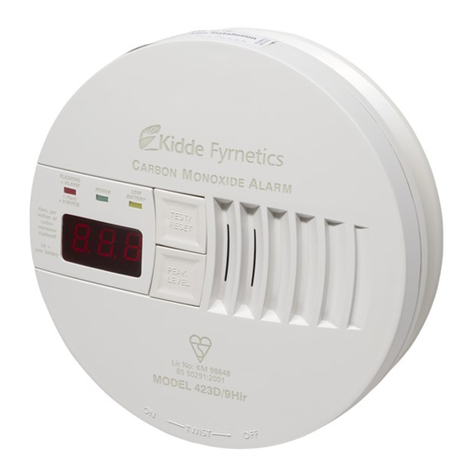
Kidde
Kidde Fyrnetics 423/9HIR Installer's guide
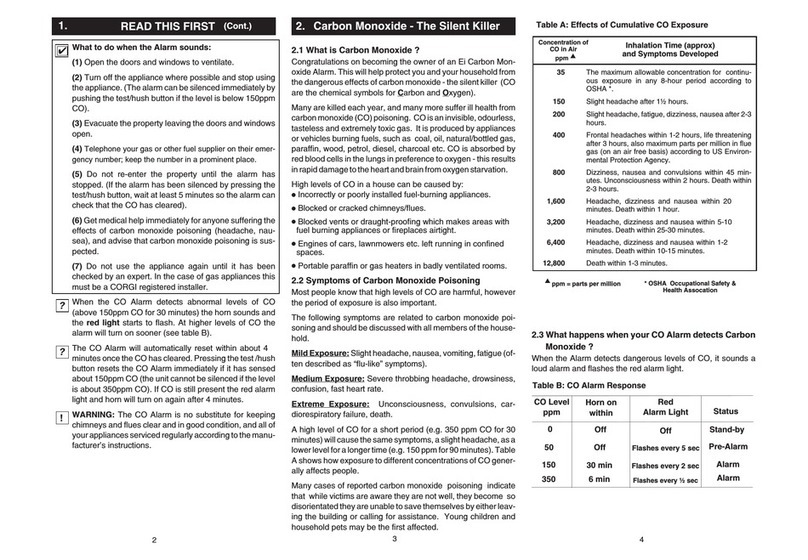
Ei Electronics
Ei Electronics Ei 220E User instructions
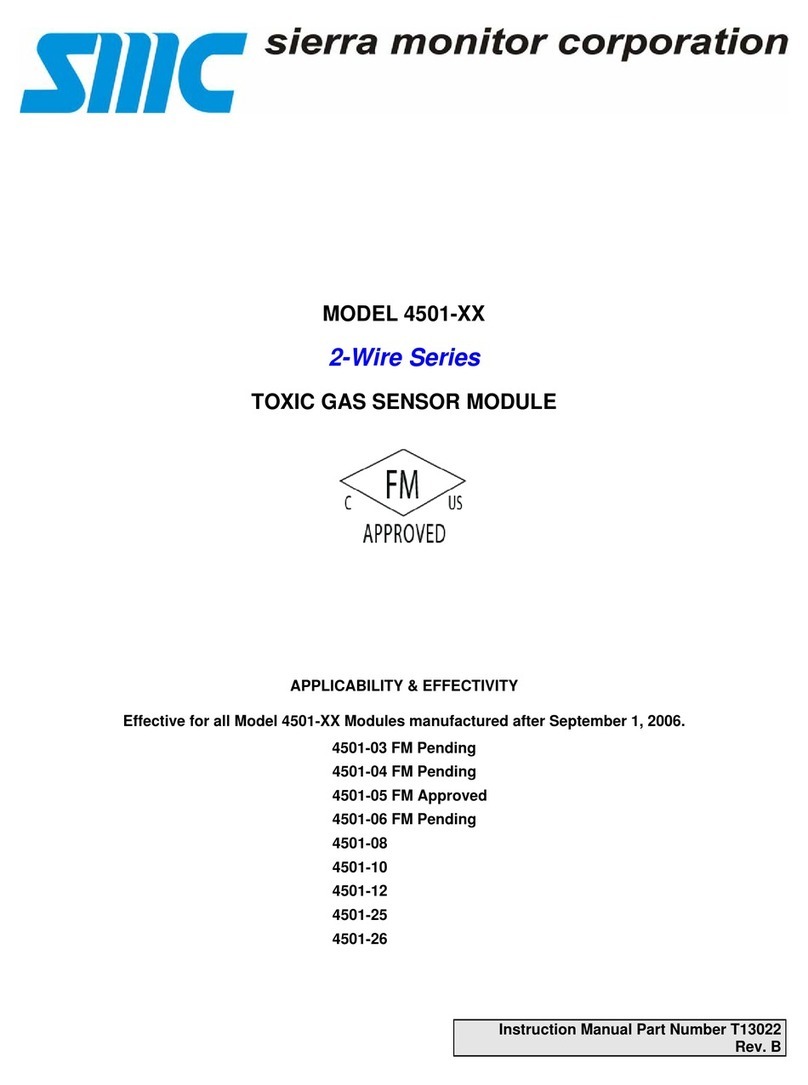
Sierra Monitor Corporation
Sierra Monitor Corporation 2-Wire Series instruction manual
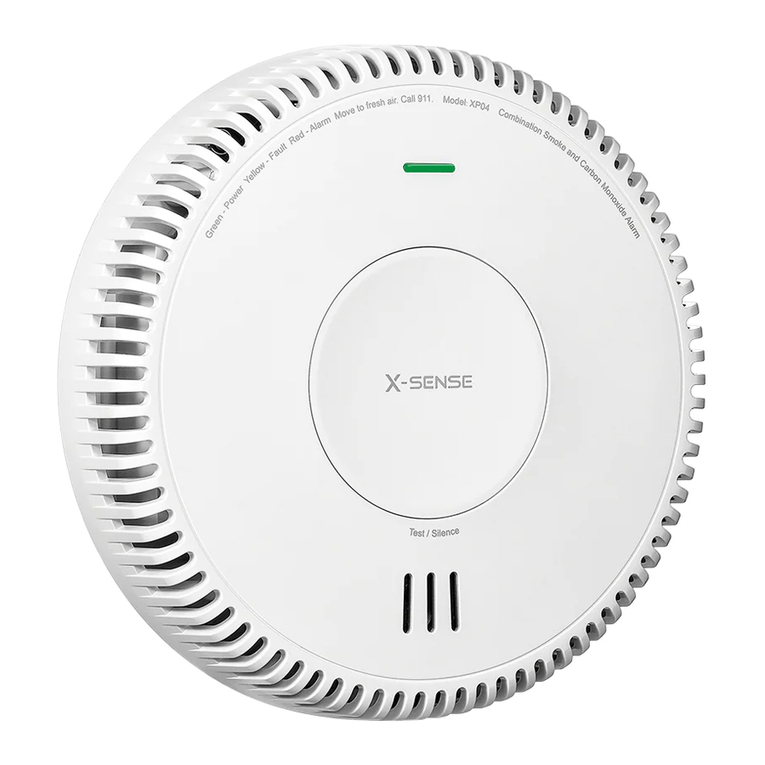
x-sense
x-sense XP04 user manual
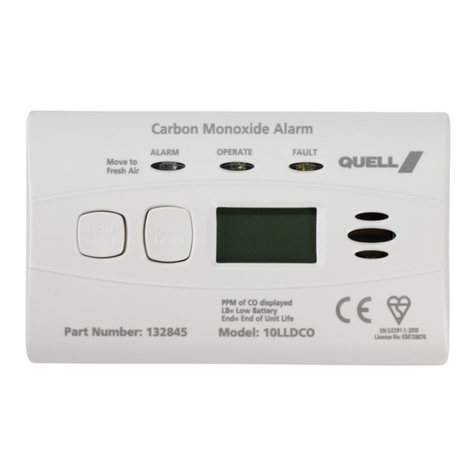
Quell
Quell 10LLDCO user guide
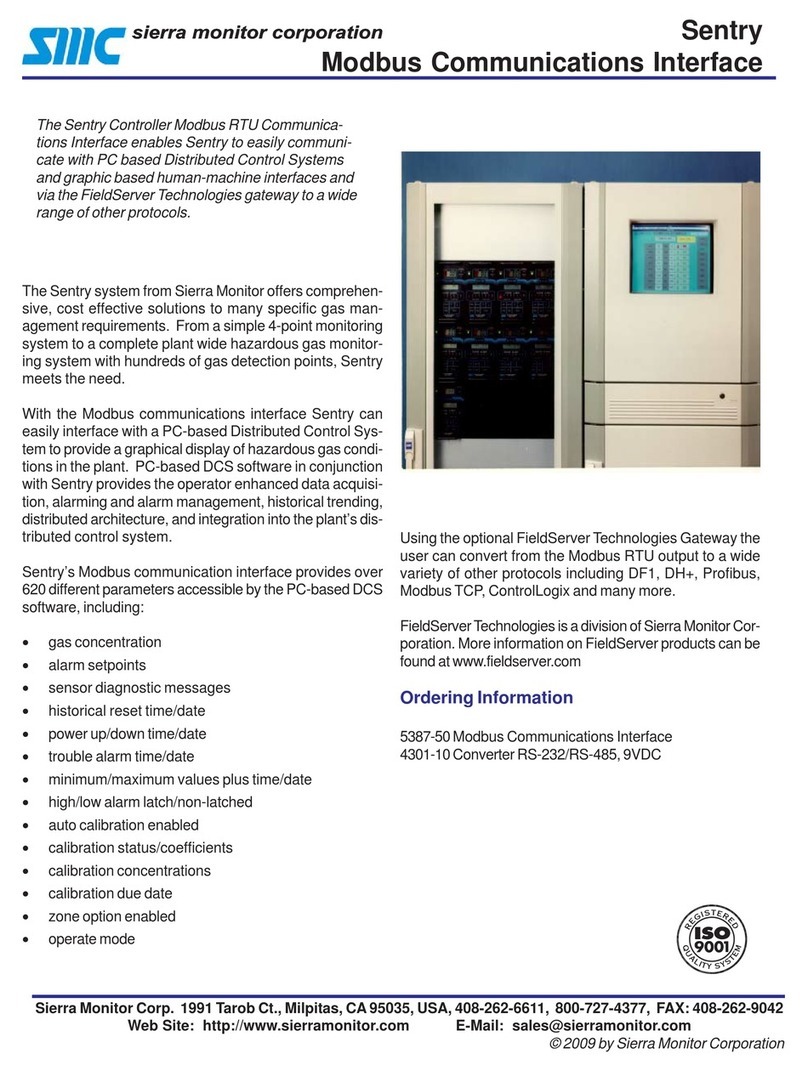
Sierra Monitor Corporation
Sierra Monitor Corporation Modbus Communications Interface Specifications
